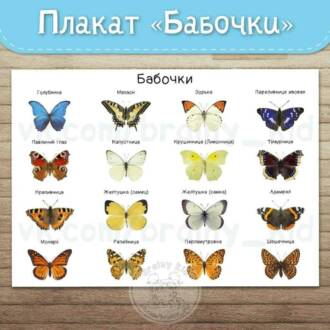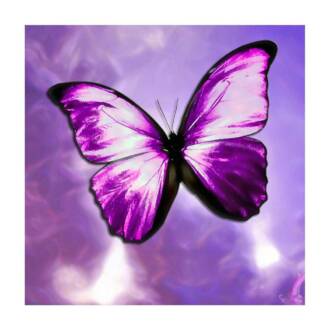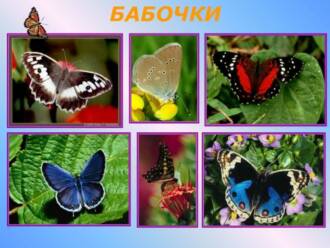Hawk hawk is a butterfly that looks like a hummingbird. She seems to be hovering over the flowers, quickly flipping her wings. The colors of the representatives of this family are so diverse and original that it can be difficult to immediately guess which insect is in front of you. One of the main distinguishing features of the hawk moth is a long proboscis, which most often exceeds the size of the insect's body. A video of the development of the caterpillar will be at the end of the article.

This butterfly with an unusual color is a frequent hero of horror films and books. Why do superstitious people feel real awe at the sight of a small insect, and should summer residents who have discovered a hawk chrysalis be afraid for their crop?
Total about 1200 species of such butterflies are known, some of which are listed in the Red Book. In Russia, you can see 50 species. How to understand that it is a hawker in front of you? Should you be afraid for the harvest if you find an uninvited guest at your summer cottage?
Description and appearance
The hawk moth is usually large or medium in size. His the body with a long proboscis of the Lepidoptera order has a cone shape at the end and is pointed, the wings are elongated and reach a span of 30 to 175 mm. The apices of the long antennae are pointed and hook-shaped. The eyes are round in shape, with a crest of long scales covering them from above. The proboscis is much longer than the body - it can exceed its size several times, but in some species it is short.
The leader in the length of the proboscis among all insects is the butterfly Amphimoea walkeri. The proboscis of this South American species is sometimes 4 times the size of the body and is 28 centimeters.

The labial palps are bent upwards. Outside, they are covered with scales, but on the inside there is no such cover. On the paws you can see short spines arranged in several rows. There are scales on the abdomen, which are collected at the end in the form of a brush or tassel. The length of the hind wings is one and a half times greater than their width, while with the naked eye you can see even in the photo a significant bevel to the rear edge.
Hawk hawk eggs are oval, their size is approximately 1.5 by 1.2 mm. The color is usually pastel: it can be pale green or blue. The eggs are left on host plants, the butterflies choose the underside of the leaves.
The hawk caterpillar is distinguished by its large size, five pairs of legs and bright coloration - it is decorated with oblique stripes and spots resembling eyes, and individual hairs can be seen on the surface. Its length is initially up to 12 mm, while caterpillars of the fourth age can grow significantly and be from 40 to 55 mm. Their weight is approximately 4 g.
Moth hawks are real gourmets - they usually feed either on just one plant species, or several, but closely related. Caterpillars can be seen both on trees and shrubs, most often in the dark - they are active in the evening and at night. However, some species are awake during the day.
The hawk pupa is distinguished by a characteristic elevation at the posterior end, which resembles a horn in shape. She is smooth and shiny. Weight varies from 7 to 12 g, the color in the first hours after pupation is from yellow to cream, sometimes with a green tint, and later becomes red. The pupal stage lasts about 30 days.

What does a hawk eat? Some species are pests that can harm broad-leaved and coniferous species in forests, and stone fruits and fruit crops in gardens.. But don't worry. The hawk caterpillar, although it does not bring benefit, but it will not cause serious damage to the crop, it is not worth fighting it.
This insect, similar to a hummingbird, is thermophilic. Most species are active migrants. The habitat is wide. Butterflies often move to other territories that are located north of the places where they were born. Wherein hawk moths can easily overcome real obstacles on the way - for example, mountains that rise 3500 meters above sea level.
Features and lifestyle
How to understand that in front of you is a hawk moth? Pay attention to its features:
- Adults can be up to 11 cm in length, while the proboscis is up to 10 cm.
- The speed of movement of the hawk moth is up to 50 km per hour.
- Butterflies are fantastic colors.
- The hawk larva reaches 12.5 cm.
- The horn comes in different colors depending on the type of insect.
- Before the transformation of the chrysalis into a butterfly, a color change occurs.
- Brazhnik looks like an alien creature - his “outfit” can be so unusual.

Should summer residents be afraid of hawk moth?
The basis of the diet of this species is fragrant nectar.. Therefore, in areas where there are many flowers and shrubs, they are more common. You can see how the hawk moth seems to hang over a flower in a flower bed. They appear extremely rarely in the garden - isolated cases are usually recorded. The population varies greatly every year and is largely dependent on weather conditions. So in cold years, hawk moths become much smaller, and in warm years the number of insects increases sharply.
Caterpillars do not cause serious damage to plantings - they feed on young leaves, but not on a significant scale, so that plants recover quickly. The accumulation of such insects is a rarity. Therefore, if you see a caterpillar, then you should not worry about the harvest, it is better to just carefully transfer it from your site to the meadow, because this insect is listed in the Red Book.

Since ancient times, it has been believed that the hawk moth is a harbinger of serious trouble. Most likely, the reason for such superstitious fears and hostility lies in the appearance of the butterfly. On the back of some species, you can see an ominous pattern - as if a skull and crossbones are depicted on the body. To see what the hawk moth looks like, you can search photos for the query “moth hawk photo”. The second reason that gave rise to a lot of speculation is the unpleasant squeak of an insect.
Brazhniki in culture
For superstitious people, meeting with a hawk is a frightening event. Butterfly under titled "Dead Head» became the heroine of terrible legends and stories. This insect has been blamed for disease, death, and even war. Some beliefs are still alive - so the Mexicans believe that if a scale from the wing of a hawk inadvertently gets into the eye, then you can even go blind.
References to the frightening butterfly can be found in books and films. So in the film "The Silence of the Lambs" by Jonathan Demmi, a maniac puts a hawk chrysalis in his victims' mouths. In the novel, on which the film is based, a different species is chosen - Acherontia styx, but in the film we see exactly the dead head hawk moth.
Edgar Poe mentions this butterfly in the story "The Sphinx" - there the insect crawled along the cobweb on the window. Alexander Belyaev refers to the same terrible image in the story "Dead Head".
Van Gogh called one of his works "Dead Head Hawk Moth". However, he mistakenly depicted another butterfly, which is called the Peacock-eyed Pear. A new name was given to the painting at the Artist's Museum in Amsterdam, renaming it "The Imperial Night Butterfly".
How long does this butterfly live?
The hawk insect does not live long. Its life cycle consists of four phases. First, the female must lay an egg, from which a larva appears after 2-4 days. The caterpillar turns into a chrysalis, later an adult is born. To attract the attention of the male, a special pheromone is released. After mating, which lasts several hours, the butterfly lays its eggs on plants.
The life span of these insects varies depending on the species:
- tobacco hawk moth lives for about a month;
- some species live only a few days and die after new eggs are laid. At the same time, they feed on those reserves that were made earlier. Full classification of butterflies here.

Breeding hawks
Moth hawk moths of most species are easily bred in captivity. Usually, an aquarium is installed at home, branches of deciduous trees are placed inside it. Caterpillars are planted on them. Soil and pebbles are placed at the bottom. In winter, the bottom of the aquarium is covered with sphagnum or wet sawdust. For breeding, you need to light the aquarium for at least 14 hours a day. The required humidity is maintained with a spray bottle. Read more about what is butterfly farm.
Types of hawks
Wine hawk hawk (also called "grape hawk hawk" or "pink hawk hawk") is found on the vine. This species is distinguished by its bright coloration, large size and sharp spine.

The lilac hawk moth is one of the largest butterflies that adorns the hawk family. Its wingspan ranges from 90 to 120 mm.. The hind wings are painted pink, on the abdomen you can see rings, some of which are also pink, while others are brown. Lilac hawk differs from other species in its proboscis - its length is approximately the same as the body of an insect. The caterpillar can be of two colors - green or purple.

Hawk hawk is a hummingbird of the middle band. Indeed, as you can see from the photo, it will not be difficult to find common features in a butterfly and a bird. A joke of nature - hummingbirds are the smallest birds, their weight is usually no more than 2 g, and hawks are leaders among butterflies in size. During feeding, insects do not sit on flowers, but seem to hover over them, quickly flapping their wings. It seems that a tiny bird hovered over the bud. In central Russia, one of the most common species is the hawk hawk.

Lime hawk is easily recognizable due to the front wings with serrated edges, the span of which can be from 60 to 80 mm. And here we have pictures of the biggest butterflies in the world. The color ranges from olive green to rusty with irregularly shaped dark spots. Hindwings yellow ocher. The caterpillar of this species is green with red and yellow stripes. You can see it in the summer on birch, alder and linden.

The night moth hawk moth is not protected from the dangers that lie in wait for it in its natural habitat everywhere. For example, wasps and wasps can lay their eggs on the surface of the body of a butterfly or chrysalis. The parasites that have appeared are used as food by the internal organs of the hawk moth. The nocturnal hawk moth can also be killed by chemical insecticides that humans use, as well as be eaten by birds. Therefore, the insect is forced to defend itself, sometimes using unusual methods. For example, the larva of the wine hawk moth can easily imitate death during a bird attack. By the way, here list of all moths.
Sometimes caterpillars take threatening poses to scare off enemies - the front part of the body rises menacingly, the insect freezes in this position. Butterfly hawk moth in case of danger can greatly inflate the abdomen.
Interesting facts about hawks
Brazhnik differs not only in bright and memorable coloring. Some facts about this insect are amazing:
- The dead head butterfly is a real intruder in the insect world. The hawk robs bees - flies up to the hive and begins to buzz characteristically, then pierces the honeycomb with its proboscis and regales itself on honey. But sometimes the bees understand the trick, pounce on the robber, bite him to death and then mummify him in the hive.
- Another feature of the species is that during danger, it begins to squeak loudly and desperately.
- In a minute, an insect is able to cover a distance that is 25 thousand times larger than its body.
- In the Middle Ages, the lilac hawkweed was terribly afraid, because it was considered a harbinger of death.
- From the Latin name of the wine hawk ("porcellus") is translated as "pig". From afar, it seems that the insect is completely pink.
Moth guard
The variety of hawk moth species is amazing, but the population is declining. This is influenced by a number of factors:
- the number of birds that feed on caterpillars is increasing;
- shrubs are cut down and grass is burned;
- fodder crops are treated with substances poisonous to butterflies.
In Russia, the most favorable conditions for hawk moths are in Transcaucasia - thanks to the mild climate, pupae endure winter more easily. Moth hawks were included in the Red Book back in 1984.
In some regions where butterflies are on the verge of extinction, the use of insecticides is declining. In addition, the number of burned plants is limited, because they may have hawk pupae. These simple but effective measures can save a rare species and increase the number of beautiful species.






